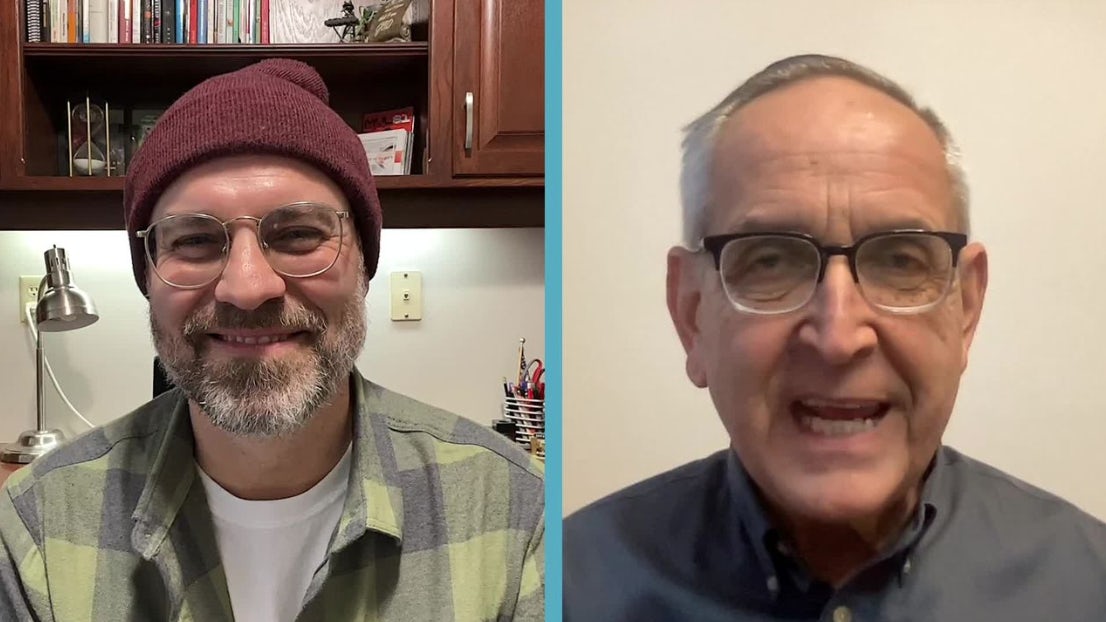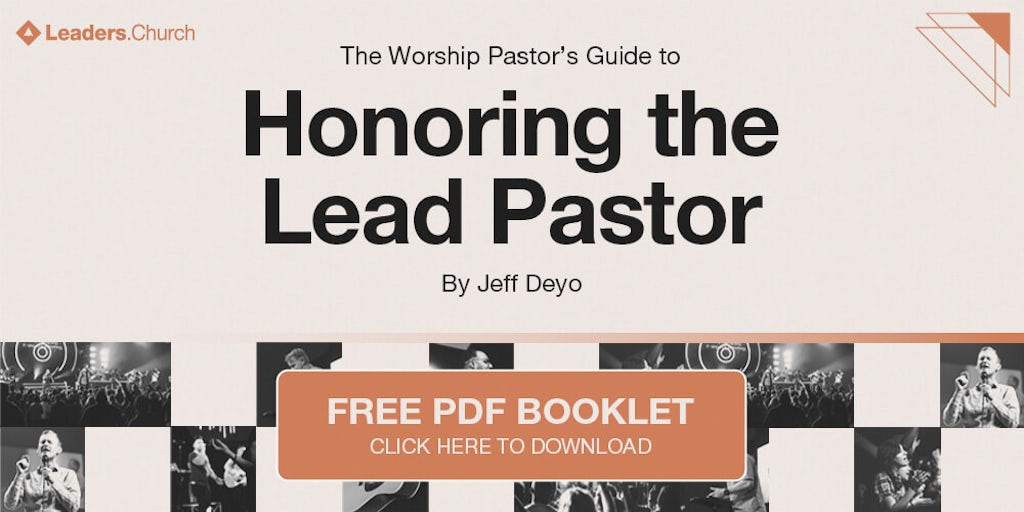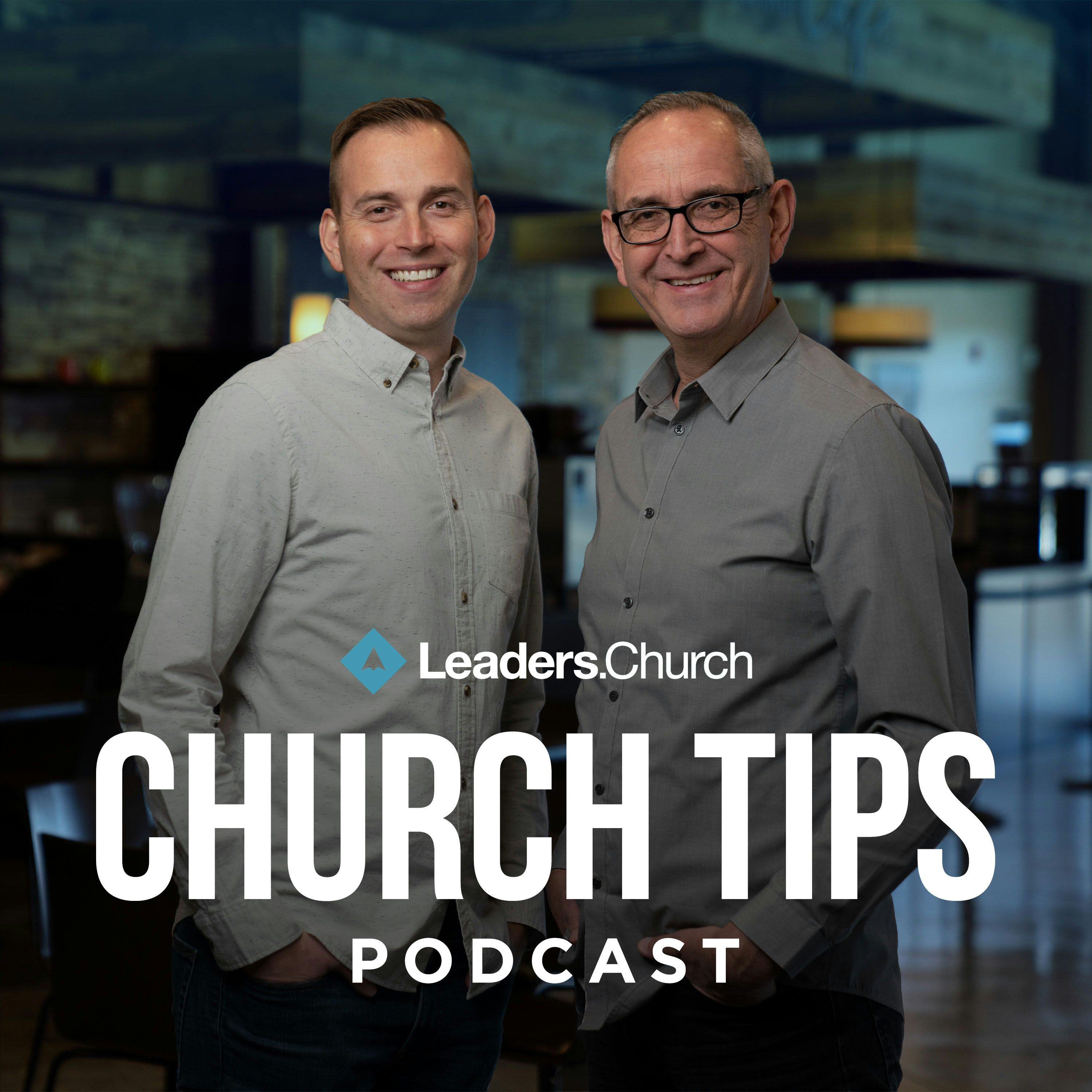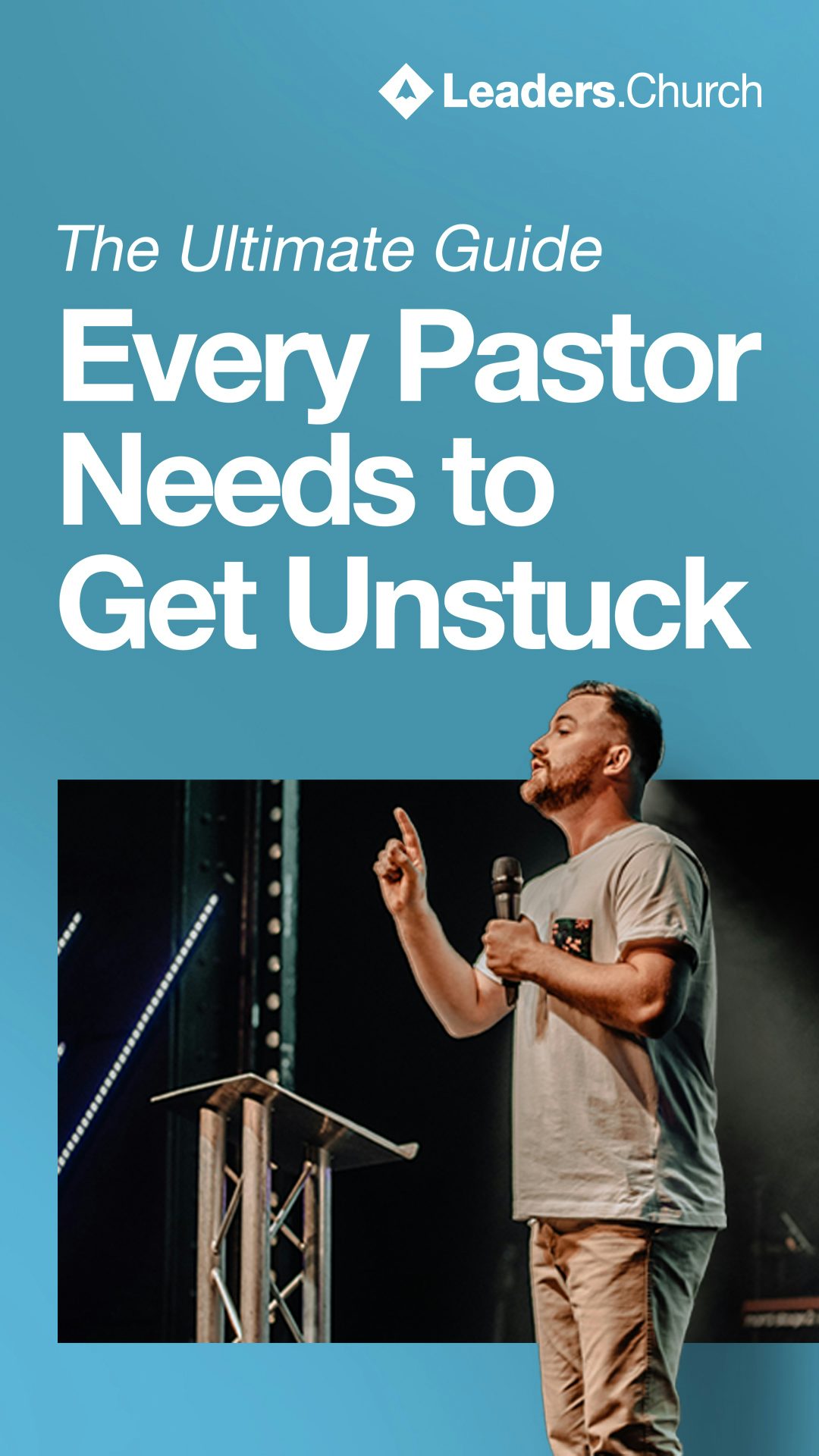Your Guide to Seamless Worship Transitions
What’s in this Episode?
In this episode of the Church Tips podcast, Dick Hardy and Jeff Deyo (former lead singer of Sonicflood) as they approach and tackle the often-awkward transitions between worship songs.
Show Notes:
PDF’s:
The Pastors Guide to Navigating Generational and Cultural Worship Gaps
The Worship Pastors Guide to Honoring The Lead Pastor
—– Want more free content? —–
Check out this FREE Masterclass on the 4 secrets pastors can use to grow the church: https://leaders.church/4-secrets-masterclass-opportunity/
Subscribe & Follow:
- Subscribe on Apple Podcasts
- Follow on Spotify
- Subscribe to YouTube Channel
- Subscribe on Google Podcasts
- Like us on Facebook
- Follow us on Instagram
- Follow us on Twitter
Other Resources:
- Leaders.Church
- Leaders.Church Blog
- Church University
- Take the Free 5 Day Leadership Challenge for Pastors
- Get Free Access to the 4 Secrets Masterclass
Read the Transcript
Dick Hardy 0:06
Hey friends, welcome to the Church Tips Podcast. I am so excited to be with you. My name is Dick Hardy and I’m with my good friend Jeff Deyo from the great state of Minnesota. Say hi, Jeff.
Jeff Deyo 0:16
Hey, what’s up everybody? How’s it going, Dick?
Dick Hardy 0:19
There, you know, either you’re wearing the stocking cap because worship pastors are cool that way, or it’s chilly in Minneapolis. Something like that.
Jeff Deyo 0:19
It could be a little of both, maybe.
Dick Hardy 0:28
A little of both. So, anyway, Jeff serves on the Worship Faculty at North Central University in Minneapolis. And he has also has this claim to fame of being a lead singer with Sonicflood, the great worship band back in the late 90s and early 2000s. And it really is a privilege of ours at Leaders.Church and Church University to be able to hang out with Jeff. So thanks for for doing the drill with us, man.
Jeff Deyo 0:57
Thanks. I love the partnership. Appreciate you guys.
Dick Hardy 0:59
Good
Dick Hardy 1:00
Over the last number of months we’ve created with Jeff’s help and kindness and generosity, the Worship Leadership Course in Church University, you’re going to hear more and more about that in the next number of days. Along the way, we created two PDFs that are designed to be helpful to lead pastors and to worship leaders. The first is the Worship Pastor’s Guide to Navigating Generational and Cultural Gaps. High value PDF, you’ll want to grab that we’ve got that we’ve got notes on that are there in the show notes, the link to where to get that PDF. And the second one is the Worship Pastor’s Guide to Honoring the Lead Pastor.
Dick Hardy 1:42
Again, both of those will be in the show notes for you as we’re moving along. So, but let’s jump in right now to the topic of making the most of your worship transitions. So worship pastors and worship leaders for sure know that feeling of oh, man, I’m finishing this song, and I gotta get to the next one. And all these kinds of things. Lead pastors have been out there watching that thing go upside down way too often. So, Jeff, I know that’s never happened to you. But maybe you could give us a little jumpstart into the conversation on on how you navigate this?
Jeff Deyo 2:20
Absolutely. Yeah. I mean, you know, most guys out there know that they’ve been cruising along in their favorite song, their worship song, and everything’s going great. And then you get like three bars from the end, you go, Oh no, I forgot to talk about the transition, you know, And how are we going to get from this song to the next song, it’s like leaping across the Grand Canyon sometimes, you know? So, we I have a few ideas that I think are going to help you. You might think, oh, I know how to do transitions. I just have a few ideas that might be outside of the box that I really want to share with you.
Dick Hardy 2:52
Yep. Well, let’s, let’s talk about that here a little bit. You know, where do you begin in figuring out transitions? Where does it all start?
Jeff Deyo 3:01
Yeah, well, it starts honestly, with what keys the songs are in, because that’s a big part of our transitions. If all the song keys are the same, that’s going to help your transitions. Now, you’re still not all the way there yet. But many times we have different keys that we’re singing these songs in, which is going to make the transitions a little bit more challenging. So there’s a few things that we want to do to encourage people to help you know how to make the most of these transitions, right?
Jeff Deyo 3:29
So I mean, even though, even if you have all, let’s just pretend that you had all your songs in the key of G, you know, they’re all the same. We might think, Ah, I don’t need to worry about transitions, keys are all the same. Well, that’s not true. I don’t want you to underestimate transitions, even if they’re in the same key. Because there’s different tempos, they’re different moods, are you listening to the Holy Spirit? What’s going on here? You know, is someone gonna say something? There’s so many different aspects of a transition and it’s important to not underestimate those.
Dick Hardy 3:59
No, that’s good. Who should be involved in the transition discussion? Is that just a one man, one woman decision? Or are there others involved? How does that come together?
Jeff Deyo 4:10
Yeah, that’s a good question. Um, I would say that the worship leader needs to have a plan beforehand about how the transition should go. I will say that’s part of the worship leader’s job is to, you know, you’ve chosen the songs, you’re working them together, you’re kind of fitting them together. At times, you might even switch the order of a song because these two songs are in the same key and it works a little bit better for the flow. So you’re involved in that process, even from the choosing of the songs.
Jeff Deyo 4:40
So then when you get into it, you have a plan about how you think things are going to go and then you can present that to your team. Now some guys are so on top of it, that they’ll actually put some of those ideas in the Planning Center online documents, right? So they’ll actually put some of those notes in there. Hey, we’re going to end this song, and we’re going to do this swell, and then we’re going to count off and then we’re going to… You know, they’re going to give some of those directions. And I would encourage you, if you can do that, do it.
Jeff Deyo 5:09
Now one of the things, I’d like to encourage you, this is a big, big point right here, alright. So many times what I’ve seen people struggle with, they have this big opener song, right? And it’s a big song. It’s a fun song. And it ends with this big crash out, as we would call it, where everybody’s like, you know and the drummer is hitting, and the keyboards play, and the guitar player is doing their thing. And then we kind of ended with a ba, ba, you know, and it’s over. Well, then the second song is this song off of maybe the latest Hillsong thing or latest Match City project. And it starts very soft, and maybe with what we would call a pad sound or, or a keyboard type of sound. And so people think, Oh, well, we have to do this song exactly like it is on the album. Well, you’re kind of knee jerkin people. Like you go from this moment of celebration to this quiet as a church mouse type moment, you know?
Jeff Deyo 6:01
Well, there’s different ways to fix it, I want to give you two real quick. One is to, if you can, when you finish that fast song, maybe go back to the chorus of that song. And if it’s possible, sing that chorus again, but slightly down in intensity, and maybe not with the same tempo. There’s a lot of fast songs that are really, that work well, this way, where you can sing out the chorus, but slower, more elongated. And I’m telling you, this does a lot of things. It helps the transition, but it also helps people sing that song with new ears and new eyes, because suddenly they’re singing something different and they have new perspective on the lyrics they’re singing. So you bring the intensity of the first song down by singing that that chorus down, and then it eases you into the transition for a slower song.
Jeff Deyo 6:52
Now the other way you can do that is the flip. You can always take that second song, and beef up the introduction, take a section from the end of the second song that usually is bigger and louder, and bring that up to the front and make your introduction louder and more intense. So you can cross out on some one, count off on the next song and kind of go big full band into the intro of your second song and then drop into the verse, so that smooths all that out.
Dick Hardy 7:23
Yeah, no, that’s good. So how do you, when you’re doing transitions, of course, we’ve got, as we’ve talked about, in a few of these podcasts, you’ve got varieties of players here. Of course, you have the singers, you got the band, you got the production people. How do you talk, communicate to the production people about transitions?
Jeff Deyo 7:45
Yeah, I mean, what’s going to happen is, especially if they are at the rehearsal, then they’re going to kind of see what’s happening. And they’re going to experience the spaces that are going to happen between songs. But some of that does need to be discussed. I know that some are, there’ll be an issue of whether or not a person is going to be talking, you know, like lighting. Is lighting going to come down, is it just going to be silhouettes, is it just going to be backlit? Are we going to need to keep a light? Are we going to need to move a light from this person who’s singing to the next person? Is someone praying on those transitions?
Jeff Deyo 8:17
So you have to kind of talk through some of those elements so that the production people know. Is this mic going to be up? You know, if I’m leading the first song and someone else is leading the second song, there’s always a question as to whether am I going to exhort at the end of the first song and maybe pray as part of the transition? Or is the other singer going to do that as part of the next song. So the engineer needs to know what’s happening there too. So they can make sure they have the mic levels at the right level?
Dick Hardy 8:46
Yeah, that’s good. You know, you referenced creativity along the way. Just talk a little more about creativity and transitions.
Jeff Deyo 8:56
Yeah, there’s so many great things that you can do. You know, being able to bring different ideas, different ways of doing the transitions. You know, like for example, sometimes you might think this is a difficult transition. If you’re, if you’re doing a song in C, and you want to drop down a half step for the next song in B. Now, that’s probably one of your most difficult transition moments, but I want to give you two really awesome ideas on how to make that without it feeling like a weird half step, you know, drop.
Jeff Deyo 9:29
Number one would be at the end of song one that’s in C, you are going to go acapella singing without the band, and you’re going to sing the chorus again of that song. It couldn’t be that you start singing it with the band, sticking on that that root chord, the one chord, and then they begin to fade out as you begin to sing. Now this creates a moment where the congregation can hear their voices so much better. And there’s this beautiful moment of everyone’s singing, but you’ve taken the music away. And the voices are just singing. And now when we’re done with that chorus, now you can fade in a new pad in the new key, and it’s not so jarring, right?
Jeff Deyo 10:10
Another quick way that you could do that is if you’re not wanting to go to acapella you could try a drums only intro to song number two. So, you finish song number one in C, and you kind of swell at the end of that. And then you count off the next song. And the drummer, we create this four bar drum loop, it could be with a medium tempo song, or an up tempo song or even a slower song, you could kind of keep this little drum thing going with tom’s. But just something that kind of keeps going. So as you finish song one, you count off song to the drums start the next song in the right tempo, but we haven’t got to the key yet, right. So we’re fading out, while the drums are going for those four bars, we’re fading out the key of C. And then when we come in with the key of B, there’s been no key for at least a bar or so, a measure of that drum fill. And when we come in, it’s something new. So there’s been some space between those two different keys, and that helps the ear navigate that better.
Dick Hardy 11:17
You know, you referenced the congregation singing, hearing themselves sing. You know, they really play an important role even in things like transitions.
Jeff Deyo 11:28
They do.
Dick Hardy 11:28
And so you’ve referenced to me about the role of the leader teaching the congregation to stay engaged during transition. Talk a little bit about that.
Jeff Deyo 11:42
Aww man, that’s a huge one, Dick. I mean, this is part of our culture that we’ve got to shift worship leader, right? If the congregation has this mentality that the only time they’re worshiping God is when the lyrics are on the screen, then we don’t have the correct culture. So what we want to do because there are musical moments, there are transitions that the end of the song the introductions at the beginning of the song. If people like disengage, and then re-engage, what you can do, as Dick mentioned, is you can teach the congregation to worship through the transitions.
Jeff Deyo 12:14
And sometimes it’s just a matter of saying it. Calling it out, saying this is the elephant in the room, one Sunday morning and just saying, hey, you know what, there’s something I want to encourage you guys. You know, you might notice us as a band, navigating between different keys and different songs, starting, stopping, all that stuff. But we want to encourage you to stay engaged with God. And don’t feel like you have to start and stop your worship when we’re starting and stopping songs
Dick Hardy 12:40
But you know, Jeff, we’ve had great conversation on this whole subject of transitions, give us a wrap up. What do you want the viewer and listener to really take away from this conversation?
Jeff Deyo 12:49
Well, I think the biggest thing is just making sure that we’re prepared, right? I think we’ve got to make sure that we don’t forget about the transitions and that we don’t wait till the rehearsal to start thinking about the transitions. You really need to make a plan, be creative. Don’t ever underestimate your transitions, and then come together with your worship team and work it all out.
Jeff Deyo 13:09
Now, what it does remind me of is a little thing that we do here in Minnesota called portaging. Now, I’ve never actually done this myself, but I’ve heard it’s a lot of fun. You go up to the northern part of Minnesota, see where the the state that has 10,000 lakes, right. So we have a lot of lakes that are really close together. People will go up there, they’ll take their canoes, and their camping gear, and they will load it all up and they’ll start paddling across a lake. Then get to the other side of that lake, they’ll pick all their stuff up in their canoe, and walk it across the over to the next lake, put it in there and keep going and then you camp along the way, you have cookouts and all that stuff. But you go from lake to lake to lake.
Jeff Deyo 13:52
Well, that’s wonderful in Minnesota, but it’s not wonderful for worship. Because what that does is it breaks up the flow, right? You don’t want to get to the end the lakes, the lakes are the songs, right? And we don’t want to get to the end of the song and then get up and go okay, over to the next song. Here we go. Right? We want to keep the flow. So that’s our goal with transitions is to keep that flow. That is going to help people stay engaged with God, which is our greatest desire.
Dick Hardy 14:17
Wow, that’s so good. Jeff, this has been so helpful. So good, it just right where pastors live, right where worship leaders live. I can’t thank you enough for the great content you’ve given us on this podcast. And to the viewer and listener, thanks for hanging out with us on this. I again want to remind you the two PDFs that are in the show notes, The Worship Pastor’s Guide to Navigating Generational and Cultural Gaps and the other is the Worship Pastor’s Guide to Honoring the Lead Pastor. And we’ve got a very simple link Leaders.Church/Gaps and Leaders.Church/Honor.
Dick Hardy 14:57
Feel free to download one or both of those and I think you’ll find them to be a real blessing to you as lead your church and the congregation to greater levels of worship. Again, Jeff, thank you very much for hanging out with us. And thank the viewers very much for doing the same. Make it a great one today and be blessed.
Jeff Deyo 15:15
Alright, take care.











